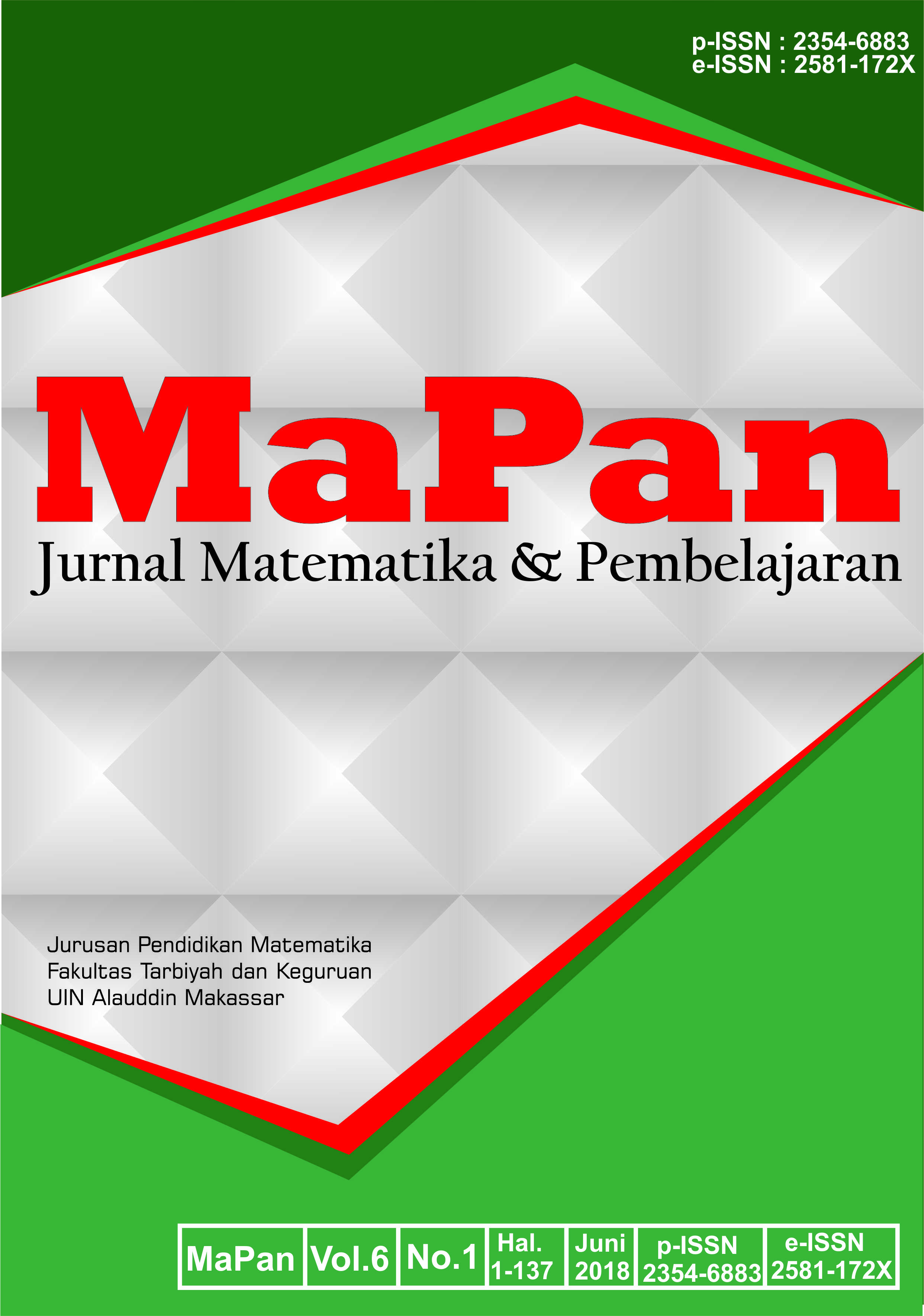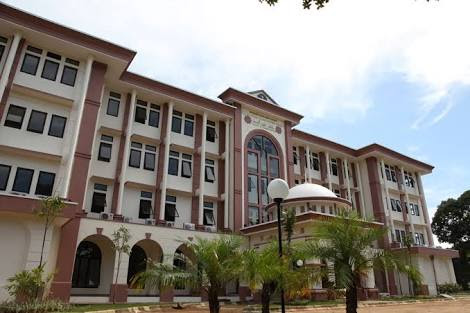PENINGKATAN KEMAMPUAN PEMBUKTIAN MATEMATIS MELALUI MODEL PEMBELAJARAN PROBLEM POSING
Abstract
Abstrak:
Hasil penelitian (Hodiyanto, 2017) menunjukkan bahwa kemampuan pembuktian matematis mahasiswa tergolong rendah dan jika hal ini dibiarkan maka berakibat semakin lemahnya kemampuan pembuktian matematis mahasiswa, padahal mahasiswa calon guru tentu akan mendidik dan mengajar siswa/siswinya agar memiliki kemampuan pembuktian matematis yang baik. Oleh sebab itu, peneliti mencoba melakukan penelitian yang bertujuan untuk meningkatkan kemampuan pembuktian matematis melalui penerapan model pembelajaran problem posing. Metode penelitian ini menggunakan metode kuantitatif dengan bentuk penelitiannya berupa penelitian eksperimental semu. Teknik pengumpul data yang digunakan adalah teknik pengukuran dengan alat pengumpul data yang digunakan adalah tes pembuktian matematis. Populasi dalam penelitian ini adalah seluruh mahasiswa semester V Program Studi Pendidikan Matematika IKIP PGRI Pontianak. Teknik pengambilan sampel menggunakan teknik cluster random sampling dan kelas A sore sebagai sampel penelitian. Teknik analisis data dalam penelitian ini menggunakan statistik inferensial, uji t. Hasil penelitian ini menunjukkan bahwa model pembelajaran problem posing dapat meningkatkan kemampuan pembuktian matematis mahasiswa, sehingga secara tidak langsung model pembelajaran problem posing bisa diterapkan untuk peningkatan kemampuan berpikir tingkat tinggi mahasiswa yang levelnya sama dengan kemampuan pembuktian matematis.
Abstract:
The results showed that student mathematical proof ability was low (Hodiyanto, 2017) and if this was left without any solution done then mathematical proof ability was the longer the lower when college student will certainly educate and teach students in order to have good mathematical proof ability. Therefore, the researcher tried to develop it through problem posing learning model. This research method used quantitative method, quasi experimental research. Data collecting technique used was a measurement technique and data collection tool used was a mathematical proof test. Population in this research were all student of semester V of mathematic education study program of IKIP PGRI Pontianak. Sampling technique used was cluster random sampling technique and class A afternoon as research sample. Data analysis technique in this research used inferential statistic, t test. The results of this study indicate that the model of learning posing problems affected it, so indirectly the problem posing model could be applied for the development of high-level thinking skills of students with the same level of it.
Downloads
References
Arikunto, S. (2006). Prosedur penelitian suatu pendekatan praktik. Jakarta: Rineka Cipta.
Bell, A. (1976). A study of pupils’ proof-explanations in mathematical situation. Educational Studies in Mathematics, 7 (1-2), 23-40. http://dx.doi.org/10.1007/BF00144356
Brown, S. I., & Walter, M. I. (1993). Problem posing in mathematics education. Problem Posing: Reflection and Applications, Hillsdale, New Jersey: Lawrence Erlbaum Associates, 16-27.
English, L. D. (1999). Reasoning by analogy: A fundamental process in children’s mathematical learning. Developing mathematical reasoning in grades K-12, 22-36.
Lestari, K. E. dan Yudhanegara, M. R. (2015). Penelitian pendidikan matematika. Bandung: PT Refika Aditama.
Guler, G. (2016). The difficulties experienced in teaching proof to prospective mathematics teachers: Academician views. Higher Education Studies, 6 (1), 145.
Hodiyanto, H., Budiyono, B., & Slamet, I. (2016). Eksperimentasi model pembelajaran problem posing dan problem solving dengan pendekatan pmr terhadap prestasi belajar dan kemampuan komunikasi matematis ditinjau dari kreativitas siswa kelas VII SMP Negeri di Kabupaten Sukoharjo. Jurnal Pembelajaran Matematika, 4 (2), 199-214.
Hodiyanto, H. (2017). Analisis kesalahan mahasiswa semester v dalam mengerjakan soal pengantar analisis real. Edu Sains: Jurnal Pendidikan Sains & Matematika, 5 (1), 33-44.
Kar, T. & Isik, C. (2014). Analysis of problem posed by pre-service primary teachers about adding fraction in termof semantic structure. Internationl Society of Educatinal Research. 9 (2), 135-146.
Knuth, E. J. (2002). Secondary school mathematics teachers' conceptions of proof. Journal for research in mathematics education, 33 (5), 379-405.
Mahmudi, A. (2011). Problem posing untuk menilai prestasi belajar matematika. Seminar Nasional Matematika Dan Pendidikan Matematika pp. 20-29. UNY: Yogyakarta.
Ozdemir, E. & Ovez, F. T. D. (2012). A research on proof perceptions and attitudes towards proof and proving: some implications for elementary mathematics prospective teachers. Procedia-Social and Behavioral Sciences, 46, 2121–2125.
Sadikin, A. (2009). Pengantar logika matematika dan himpunan. Pontianak: STAIN Pontianak Press.
Selden, A & Selden, T. (2003). Validations of proofs considered as texts: can undergraduates tell whether an argument proves a theorem? Journal for Research in Mathematics Education, 34 (1), 4-36.
Siswono, T. Y. E. (2008). Model pembelajaran matematika berbasis pengajuan dan pemecahan masalah untuk meningkatkan kemampuan berpikir kreatif. Surabaya: Unesa University Press.
Stylianides, G. J., Stylianides, A. J., & Philippou, G. N. (2007). Preservice teachers’ knowledge of proof by mathematical induction. Journal of Mathematics Teacher Education, 10 (3), 145-166.
Copyright (c) 2018 MaPan : Jurnal Matematika dan Pembelajaran

This work is licensed under a Creative Commons Attribution 4.0 International License.


